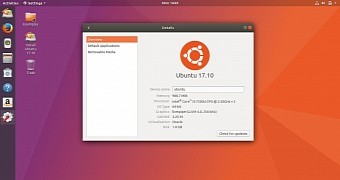Now that Ubuntu 17.10 (Artful Aardvark) received a fresh coat of paint for the default GNOME Shell theme and login/lock screens, it's time to look a bit under the hood for some of the upcoming features.
While the latest daily build ISO images of Ubuntu 17.10 are still shipping with the Linux 4.12 kernel by default, as the Ubuntu Kernel team is working hard this month to rebase the upcoming OS on the recently released Linux 4.13 kernel series, it looks like captive portal detection support finally landed and it's implemented by default for new installs.
"Captive portal detection is now in the Ubuntu default install. When you’re behind a captive portal, Network Manager should pop up the network’s login page. This communicates with an Ubuntu server to decide if you are behind a captive portal. The check can be disabled by visiting Privacy in Settings," explains Iain Lane, Ubuntu developer.
GNOME 3.26 and out-of-the-box printing support
The Ubuntu Desktop team also managed to land the PCLm print output support in Ubuntu 17.10 (Artful Aardvark), which means that the operating system will be capable of supporting all known driverless printing standards and most modern printers. Driverless printing was initially implemented in the current stable release, Ubuntu 17.04 (Zesty Zapus).
On the Snaps side of things, Ubuntu 17.10 received initial support for PolicyKit authentication in the Snapd Snappy daemon. This implementation allows users to log into Snapd using their username and password set during the installation, rather than of creating an Ubuntu One account, so that they can install or remove Snaps.
The Final Beta milestone of Ubuntu 17.10 (Artful Aardvark) is expected later this month, on September 28, and the final release launches next month, on October 10. Ubuntu 17.10 will ship with the GNOME 3.26 desktop environment, which debuts September 13, 2017. The Snappy Store will have many GNOME apps as Snaps, including the recently added GNOME System Monitor tool.

 14 DAY TRIAL //
14 DAY TRIAL //